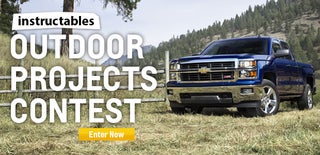Introduction: Small Hiking/Camping/Travelling Kit
This instructable will be a show case of my personal kit for hiking/travelling and also what I take out on fieldcraft exercises.
It is only a small kit and does not contain very much but it would be what i would take out on day tasks.
I'm quite new to instructables so it may not be as in depth as people may wish but all constructive criticism is greatly appreciated.
I'm going to start with the bag;
It is a High Sierra Replenish Hydration Kit. It is quite small and lightweight but can hold 2 liters of water as well as the equipment that I keep in it.
Step 1: Clothing
I'm going to start with the "boring" stuff first, i don't keep a large amount of clothes in the pack however i have what i think i need.
Clothing;
Woolly hat (keep your head warm),
Scrim Scarf (It is warm and very helpful for camouflage),
Spare Socks (experienced hikers and campers will know that the most uncomfortable thing is wet socks),
Gloves (To keep your hands warm),
A Bandanna (it has a large variety of uses from a tissue to a sling, a hat to a face mask),
Glasses (In a handy case containing: shade lenses, glare lenses and clear lenses),
Step 2: Eating Kit
Eating is vital when out on exercise and a lot of the time you have to supply your own container and utensils.
Eating Kit;
A 1 liter water bottle (staying hydrated is a must when outdoors),
2 mess tins (They fit together nicely so why break them apart?),
A enamel mug (Hard wearing and large, as you can see from the picture I am in need of a new one (I have had this one for over 15 years),
A spork (very lightweight and useful for eating outdoors),
A folding KFS set (Knife Fork Spoon. Easier to use if a sport doesn't (quite literally) cut it),
Sugar (Sugar is a must, hot drinks are often provided but sweetener never is. Always take your own.)
Step 3: Miscellaneous
The miscellaneous items in a kit are possibly the most important and definitely the most extensive.
Miscellaneous;
A Notebook (for taking notes),
A Eurohike Survival Tine (Containing a variety of survival items),
A wind up torch (Will never run out of charge),
A Torch (Much Smaller, Brighter, Lighter and Quieter than other torch but will run out of charge quicker),
A Drawstring Bag (for carrying smaller items),
2 Pens (Losing one is very easy to do),
2 Pencils (Losing one is, again, very easy to do),
A Compass and Magnifying Glass (small, combined and essential),
A Multi-tool Penknife (extremely useful in a lot of situations),
A Carbiner (for attaching items to the outside of my bag and for putting up shelters),
6ft Paracord (paracord has a huge variety of uses too extensive to list),
A Box of Matches (Waterproof, windproof and safety matches in a waterproof bright orange container),
A Paracord Bracelet (again paracord has a huge variety of uses and this time there is 10ft and in a fashionable bracelet).
Step 4: The Finished Pack
The bag is packed and as you can see from the picture it all fits. When packing the bag, take into consideration noise, don't place two metal items in direct contact with each other. Shake your bag about and if you can hear clunking or rustling, find the source of the noise and take steps to avoid it.
There are some items which I either forgot to put in or have not yet gotten but am planning to get in the near future;
A First Aid Kit,
A Maglite Torch,
A TurboFlame Lighter,
A Hexi Stove and Fuel,
A Flask,
A Pair of Leather Gloves.
Thank you for taking the time to read this and I hope you were helped.

Participated in the
Instructables Outdoor Projects Contest











